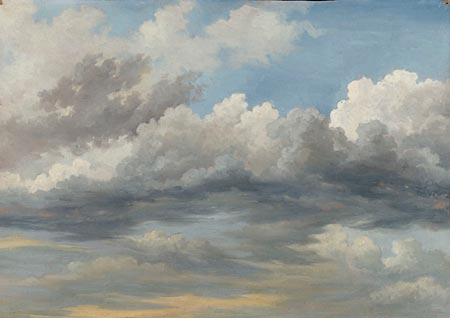
During the second half of the eighteenth century, the practice of using oil paint on paper while working outdoors became popular among landscape artists. In a treatise offering advice to students of landscape painting, Pierre-Henri de Valenciennes (1750-1819) advocated that artists start with the sky, which determines the palette of the entire composition, and then complete their sketches swiftly, preferably in fewer than two hours.
Working quickly to capture changing effects of light, the subtle hues of the atmosphere, and the evanescent shapes of clouds, artists developed and refined their techniques in sky studies. This exhibit explores the work of a number of artists from France, Germany, and Scandinavia active largely in the first half of the nineteenth century. The inaugural exhibition in a series, the show's fourteen works highlight the innovative approaches employed by artists working in situations that varied by time of day, season, and weather. The series focuses on works drawn from the collection of oil sketches acquired by Morgan Trustee Eugene V. Thaw, who is also an honorary trustee of the Metropolitan Museum of Art, and his wife, Clare.
Included in the exhibition are works by artists such as Johan Christian Dahl (1788-1857), Jean-Michel Cels (1819-1894), Carl Gustav Carus (1789-1869), Jean Charles Joseph Rémond (1795-1875), Johan Thomas Lundbye (1818-1848), Eugène Lous Boudin (1824-1898), and Eugène Isabey (1803-1886), among others.
Jean-Michel Cels (1819–1894)
Cloud Study, ca. 1838–42
Oil on cardboard
Thaw Collection, jointly owned by the Metropolitan Museum of Art and the Morgan Library & Museum; gift of Eugene Thaw, 2009.
